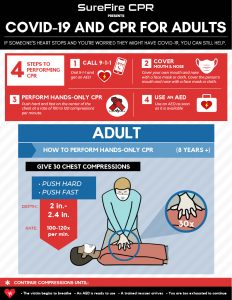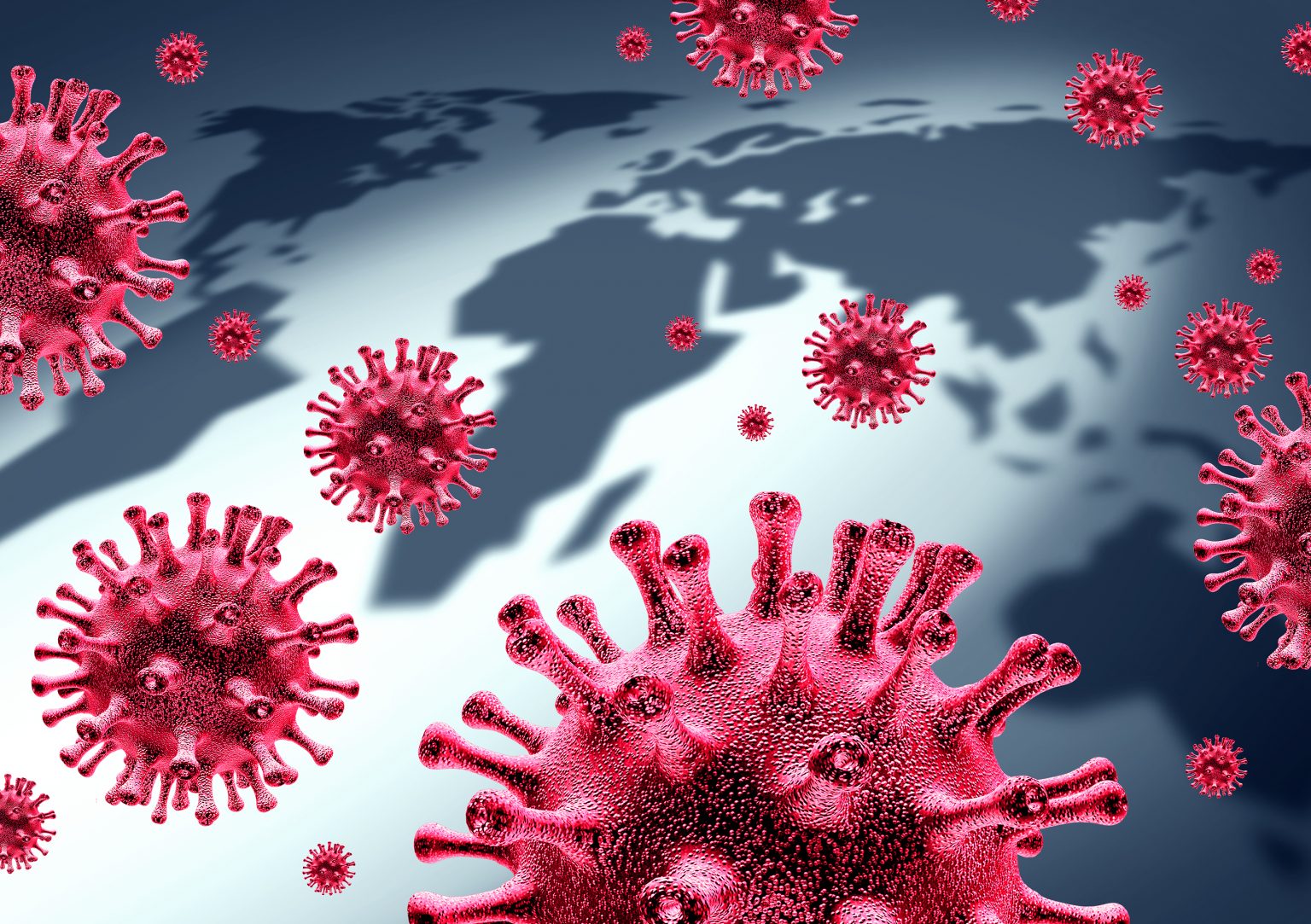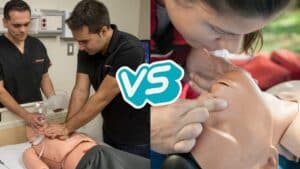Although COVID-19 is at the top of our concerns these days, other medical emergencies are just as liable to occur as ever. It is important to be COVID-safe and take every precaution necessary to stop the spread, but it is also important to remain diligent about providing care to patients experiencing other health emergencies.
Over 350,000 out-of-hospital cardiac arrests occur each year. CPR is an essential component of treatment and helps give patients the best possible chance of survival. As we navigate the pandemic, hands-only CPR is a good option to keep both the patient and the rescuer as safe as possible. Getting CPR certified and learning how to perform hands-only CPR is a fantastic way to help your community during these difficult times. You’ll learn potentially life-saving skills and be able to support those in need during life’s scariest moments.
Is It Safe to Perform CPR During Covid Pandemic?
To prevent transmission of the COVID-19 virus, we must follow social distancing and mask-wearing protocol. Because of this, it is understandable that bystanders may be hesitant to perform CPR on a stranger. However, researchers have shared that there is a low risk of COVID-19 transmission during CPR when the rescuer is wearing a mask.
The short answer? Yes, you should absolutely perform CPR in the event of a medical emergency, even during the pandemic.
The risk of death from cardiac arrest is high––according to the AHA, about 90% of patients who experience cardiac arrest outside of the hospital setting die. As such, the risk of contracting COVID-19 from CPR might very well be lower than the chance that the patient will pass away from cardiac arrest. As such, many health experts recommend that CPR is performed whenever possible, including during the era of COVID-19. Experts recommend that, during the pandemic, patients wear a mask during defibrillation.
How to Perform CPR During COVID-19
Wondering how can CPR be administered safely to reduce the likelihood of virus transmission? Hands-only CPR is a great option if you do not want to perform traditional mouth-to-mouth CPR during covid pandemic times.
What is Hands-Only CPR?
With this new CPR method, no mouth to mouth is required. Rescuers only administer chest compressions; there is no artificial ventilation required with this technique. These chest compressions help maintain circulation and restore blood and oxygen flow to the organs. Studies show that, in most cases, it can be equally effective as traditional CPR with ventilation.
Because there is less passing of air droplets between the rescuer and the patient, the likelihood that COVID-19 can be passed is smaller than with traditional CPR. “Hands-only CPR is a safe and effective way to help someone in cardiac arrest with a very low risk of transmitting the virus. You can even perform it while wearing a mask,” says UPenn professor Benjamin Abella, MD, MPhil.
How To Perform Hands-Only CPR:
Here’s an overview of the steps to perform hands-only CPR:
- Interlock your palms and place your hands on the patient’s chest slightly above the nipple line
- Administer chest compressions. You’ll want to aim for around 100 – 120 beats per minute.
- The goal is to compress the chest at least 2 inches for adults and teens and at least 1 inch for small children. To do this, you’ll need to push down pretty hard on the patient’s chest.
- Keep going until medical professionals arrive at the scene.
In order to gain a more comprehensive understanding of how to perform hands-only CPR, we recommend that you take a CPR training course. These courses will cover both traditional and hands-only CPR so that you are prepared for medical emergencies during the pandemic and beyond.
Learn CPR with SureFire CPR
Our top-notch CPR training courses here at SureFire CPR are a great option for anyone looking to learn CPR. In our CPR and AED class, you’ll develop incredible skills including how to administer adult, child, and infant CPR, when and how to use an Automated External Defibrillator (AED), and how to assist both conscious and unconscious choking victims.
Every class is led by an industry expert with field experience as a paramedic, EMT, firefighter, nurse, or another healthcare role. We’re here to answer any question you may have, because we’ve seen it all! With small course sizes and engaging lessons, students leave the classroom feeling confident in their skills. We offer our CPR and AED courses at a variety of times and locations across Southern California so that you can fit training into your busy schedule. You’ll receive a same-day certification card upon completion of the class––and you can go off into the world ready to make a difference.
So, are you ready to start saving lives? Get your CPR certification today! To register for your course, go ahead and give us a call at (888) 277-3143 or use our online contact form today.
Is it safe to perform CPR during the COVID-19?

4 Steps to Perform CPR
- Call 911: Dial 9-1-1 and get an AED
- Cover Mouth and Nose: Cover your own mouth and nose with a face mask or cloth. Cover the person’s mouth and nose with a face mask or cloth.
- Perform Hands-Only CPR: Push hard and fast on the center of the chest at a rate of 100 to 120 compressions per minute.
- Use an AED: Use an AED as soon as it’s available











